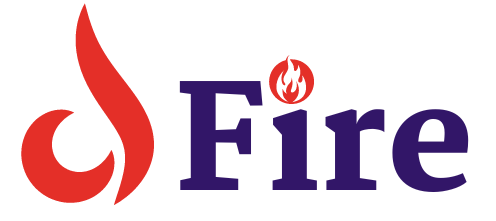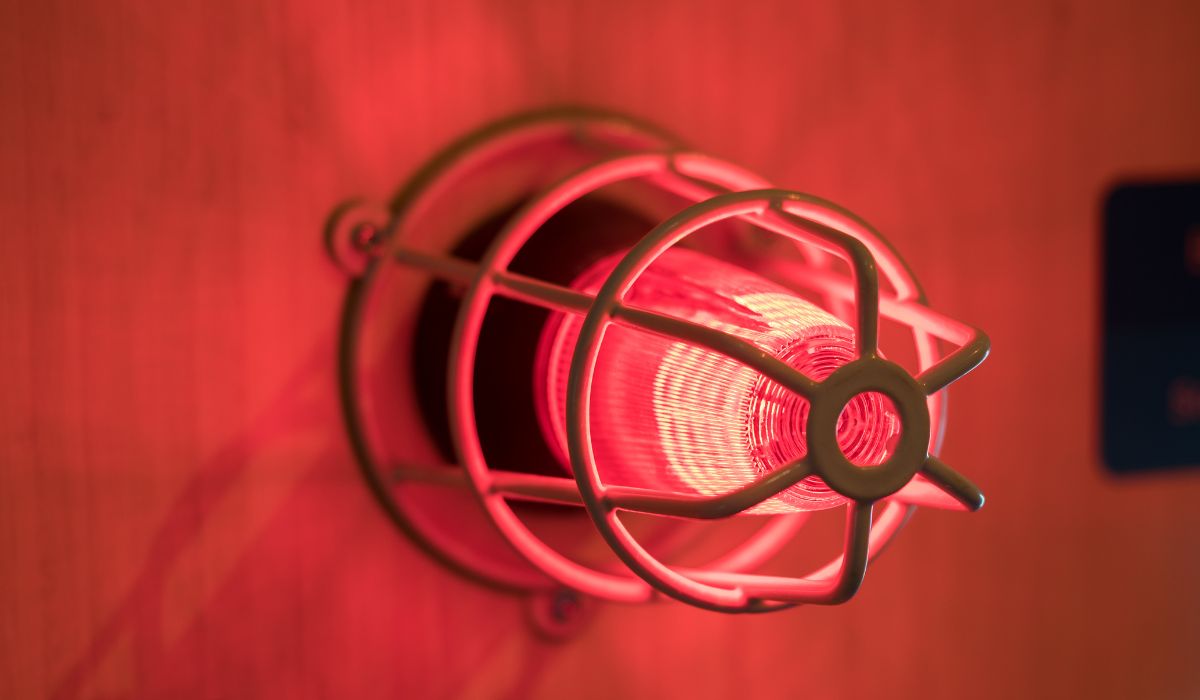Fire detection and alarm systems promptly identify and alert occupants to the presence of a fire. These systems are essential for the safety of life and property.
Ensuring safety in residential and commercial settings hinges on the reliability of fire detection and alarm systems. They play a pivotal role in safeguarding individuals from fire-related hazards by providing early warnings, which enable timely evacuation and emergency response. These systems typically encompass a range of components, such as smoke detectors, heat sensors, alarm signaling devices, and control panels.
Their precise configurations vary depending on building size, type, and specific fire safety requirements. Property owners need to install and maintain these systems in compliance with safety standards to ensure optimal functionality during emergencies. Their integration into a broader safety plan is considered a smart investment toward minimizing fire-related risks.
The Vital Role Of Fire Detection Systems
The Vital Role of Fire Detection Systems cannot be overstated. These systems serve as a guardians, constantly monitoring the environment for signs of smoke, heat, and flames. Timely detection is often the difference between safety and catastrophe. Let’s explore the life-saving benefits and early warning capabilities of these systems.
Saving Lives And Property
A quick response to a fire can save lives and prevent property damage. Fire detection systems are the first line of defense against the ravages of fire.
- Alert occupants immediately, giving them the critical time needed to evacuate.
- Minimize loss by allowing fast action to extinguish fires before they spread.
- Can be integrated with other systems to lock down areas, slowing the fire’s progress.
Early Warning Capabilities
Fire detection systems are adept at offering an early warning, which is integral in protecting both individuals and assets.
- State-of-the-art sensors can detect smoke or heat before flames become visible.
- They operate 24/7, continually safeguarding spaces even when unoccupied.
- Immediate alerts to emergency services can drastically reduce response times.
Types Of Fire Detectors
Fire detectors are key to protecting lives and properties from the dangers of fire.
Different detectors work in unique ways.
Let’s explore the most common types below.
Smoke Detectors
Smoke detectors sense smoke as a result of a fire.
They are must-haves in homes and offices.
- Ionization smoke detectors are quick to detect fast, flaming fires.
- Photoelectric smoke detectors respond better to smoldering fires.
- Some detectors combine both technologies for broader protection.
Heat Detectors
Heat detectors activate at high temperatures.
They come in two main types.
- A rate-of-rise detector senses rapid temperature increases.
- A fixed temperature detector triggers at a preset heat level.
Flame Detectors
Flame detectors are advanced.
They recognize the infrared or ultraviolet light from flames.
These detectors offer quick detection for fast responses.
| Type | Use Case |
|---|---|
| UV Flame Detectors | Industrial spaces |
| IR Flame Detectors | Outdoor areas |
Gas Detectors
Gas detectors sense combustible gases that could indicate a fire.
These are critical in preventing explosive hazards.
Carbon monoxide detectors are common in homes for safety.
Evolution Of Fire Alarm Technology
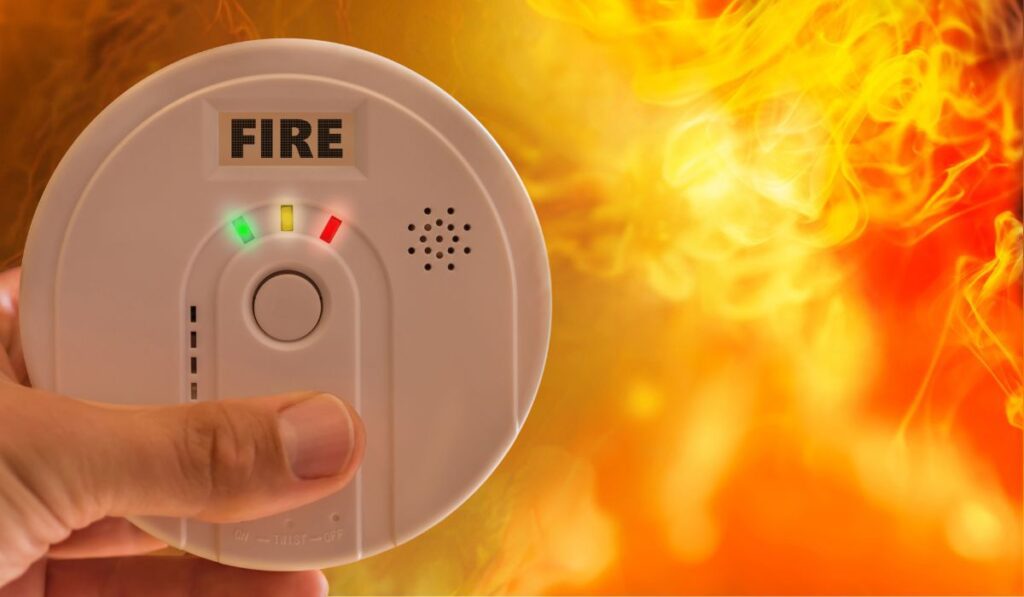
The Evolution of Fire Alarm Technology marks a timeline packed with innovation and advancement. The journey from rudimentary systems to complex networks reflects our rising commitment to safety and efficiency. Understanding this evolution sheds light on the potential for even greater strides in fire detection and prevention.
From Manual To Automated Systems
Initial fire alarm systems relied heavily on manual processes. Human vigilance was key, with individuals stationed as lookouts to sound the alarm. Fast forward to modern times, fire alarm technology has transitioned to automated systems. This leap in innovation means:
- Faster detection times
- Round-the-clock monitoring without human error
- Immediate alerting to occupants and emergency services
Automated fire alarms utilize sensors capable of picking up the slightest hints of smoke or heat, ensuring a swift response to potential dangers.
Integration With Smart Technology
Today’s fire alarms don’t work in isolation. They are part of a connected world. The integration with smart technology has led to systems with features such as:
| Feature | Benefit |
|---|---|
| Remote Control | Manage system settings from any location |
| Real-time Notifications | Receive alerts on mobile devices |
| Home Automation | Seamless integration with other smart home devices |
With the power of smart technology, fire alarm systems not only warn about fires but also offer valuable data to prevent future hazards. Digital bridges connect various safety features, forming an integrated protective shield for any space.
Key Components Of Fire Alarm Systems
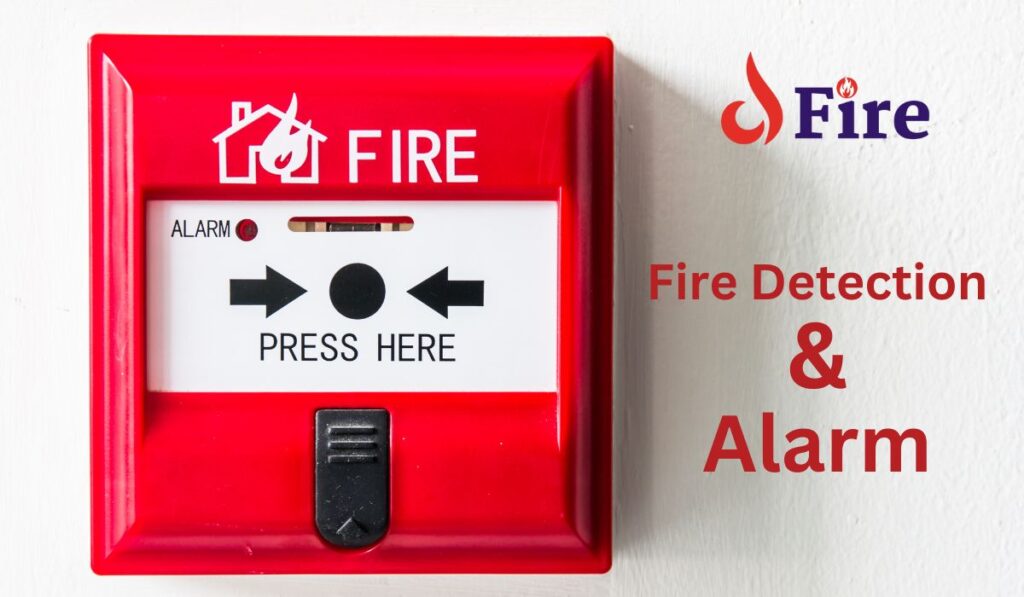
Understanding the core elements of fire alarm systems is essential. These systems serve to protect lives and property by detecting fires early. Listed below are the critical components forming the backbone of any effective fire alarm system.
Control Panel Fundamentals
The brain of the fire alarm system is the control panel. It monitors inputs from detection devices. It also issues alerts through notification devices. It is pivotal in organizing the response in case of fire.
- Primary power supply: Usually sourced from the electrical mains.
- Secondary power supply: Typically batteries for uninterrupted power during outages.
- Circuitry: Connects fire detectors and notification devices.
Notification Devices Explained
Notification devices alert occupants to a fire. They ensure a timely evacuation. Their operation gets triggered by the control panel.
- Visual indicators: Flashing lights or strobes.
- Audio alarms: Sirens or voice alerts.
Manual Call Points And Detectors
Manual call points and detectors are the eyes and ears of fire alarm systems. They sense the presence of fire and smoke. Occupants use manual call points to trigger the alarm.
| Detector Type | Function |
|---|---|
| Smoke detectors | Detect smoke particles in the air. |
| Heat detectors | React to changes in temperature. |
| Manual call points | Allow for human-initiated alerts. |
The Importance Of Regular Maintenance
Maintaining fire detection and alarm systems is crucial. These systems protect lives and property. Regular maintenance keeps them working right. Without it, systems may fail during emergencies.
Preventative Measures
Regular checks prevent system failures. Professionals spot problems early. They replace worn-out parts before they break. This saves money and avoids dangers. Clean detectors work best. Dust and debris cause false alarms or worse, stop alarms from sounding in fires.
- Test alarms monthly: Ensure they ring loudly and clearly.
- Check batteries annually: Replace them as needed for uninterrupted service.
- Inspect wiring: Look for damages that could impede performance.
Compliance With Safety Regulations
Regulations require maintenance. They ensure systems meet safety standards. Not following them risks fines. It also risks lives. Businesses must document all checks. This proves compliance during inspections.
| Check | Frequency | Compliance |
|---|---|---|
| Detector cleanliness | Monthly | Mandatory |
| Battery replacement | Yearly | Mandatory |
| Professional inspection | Annually | Mandatory |
Innovations In Fire Detection
Innovations in Fire Detection now play a crucial role in safeguarding lives and properties. Cutting-edge technologies have revolutionized traditional fire safety approaches. As these innovations evolve, they promise quicker, more precise responses to potential hazards.
Wireless Alarm Solutions
Wireless alarm systems have transformed fire safety measures. They offer flexibility and speedy installation. Not needing any drilling or wiring, they are perfect for both old and new buildings. Here’s why they stand out:
- Portability: Move detectors as needed without any hassle.
- Less Installation Time: Get systems up and running quickly.
- Easy Expansion: Add more devices without disrupting the structure.
Iot In Fire Safety
The Internet of Things (IoT) has a significant impact on fire detection. IoT connects devices for real-time monitoring and data analysis. This leads to smarter fire safety strategies. Below are a few advantages:
| Feature | Advantage |
|---|---|
| Real-Time Alerts | Instantly warns of smoke or fire, even remotely |
| Remote Monitoring | Check your property’s status anytime, anywhere |
| Predictive Analysis | Foresee and mitigate potential fire outbreaks |
Artificial Intelligence For Enhanced Detection
Artificial Intelligence (AI) elevates fire detection to new heights. AI algorithms analyze data, detect anomalies, and predict fire incidents before they escalate. Let’s explore the benefits AI brings to the table:
- Intelligent Smoke Detection: Distinguishes smoke from mist or dust.
- Advanced Pattern Recognition: Identifies potential threats faster.
- Automated Decision-Making: Initiates appropriate actions immediately.
Selection And Installation Guidelines
Protecting your home or workplace from the danger of fire begins with the right detection and alarm system. It’s crucial to select with care and install properly. Let’s dive into how to choose the perfect system and consider whether to hire professionals or try a DIY install.
Choosing The Right System For Your Needs
Selecting the right fire detection and alarm system depends on several factors:
- Size and layout of the building
- The purpose of the premises
- Local fire safety regulations
- Available budget
Options to consider:
- Ionic Smoke Detectors for fast-flaming fires
- Photoelectric Detectors for smoldering fires
- Heat Detectors for areas with dust and steam
For best protection, a combination of types works well.
Professional Installation Vs. Diy
When installing your fire alarm system, two paths are clear: professional or DIY.
| Professional Installation | DIY |
|---|---|
| Ensures expert fitting and advice | Potential cost savings |
| Compliance with local fire codes | Full control over the installation process |
| May include warranties and support | Requires a good understanding of the systems |
It’s important to assess your own skills and knowledge before choosing DIY. Mistakes could be costly and dangerous. For peace of mind, professional installation is often the recommended route.

Credit: www.nytimes.com
Legal And Insurance Perspectives
Staying on top of fire safety isn’t just a matter of routine; it intertwines with legal stipulations and financial considerations. Understanding the intersection of law and insurance guides businesses and homeowners to maintain compliance and cost-effectiveness in fire protection strategies.
Understanding Fire Safety Legislation
Fire safety legislation sets the bare minimum for fire protection. Non-compliance can lead to hefty fines.
- Codes specify the types and placements of alarms.
- Regular inspections are mandatory.
- Failure to comply can shut businesses down.
Laws vary by location. Check local requirements to stay in line.
How Alarm Systems Affect Insurance Premiums
Insurance companies favor premises with robust fire alarm systems.
| Without Alarm System | With Alarm System |
|---|---|
| Higher premiums | Discounts available |
| Risk of claim denial | Faster claims processing |
Installing certified alarms can reduce premiums.
Communicate with insurers about potential savings.
Case Studies: Successful Interventions
The ‘Case Studies: Successful Interventions’ section highlights real-world scenarios. Fires claim lives and property. Quick responses save both. Explore how effective systems and past lessons raise safety.
Incidents Averted By Efficient Systems
- Saved School: A fire alarm at a Texas school detected smoke late at night. The system’s immediate alert allowed firefighters to act quickly. The building and students remained safe.
- Warehouse Win: In Chicago, a warehouse’s advanced sensors stopped a major blaze. The system detected abnormal heat patterns, summoning help before flames took over.
- Office Outbreak: Responsive sprinklers in a New York office doused a fire. It began in a server room. Workers evacuated. Damage reduced. Lives saved.
Lessons Learned From Past Fires
| Fire Event | Lessons |
|---|---|
| Hotel Inferno | The importance of emergency exits and regular drills became clear after guests escaped a burning hotel. |
| Factory Fiasco | Regular maintenance checks were implemented industry-wide following a machinery spark that led to disaster. |
Both events teach us vital fire safety measures. They encourage proactive approaches and improvements in fire detection systems.
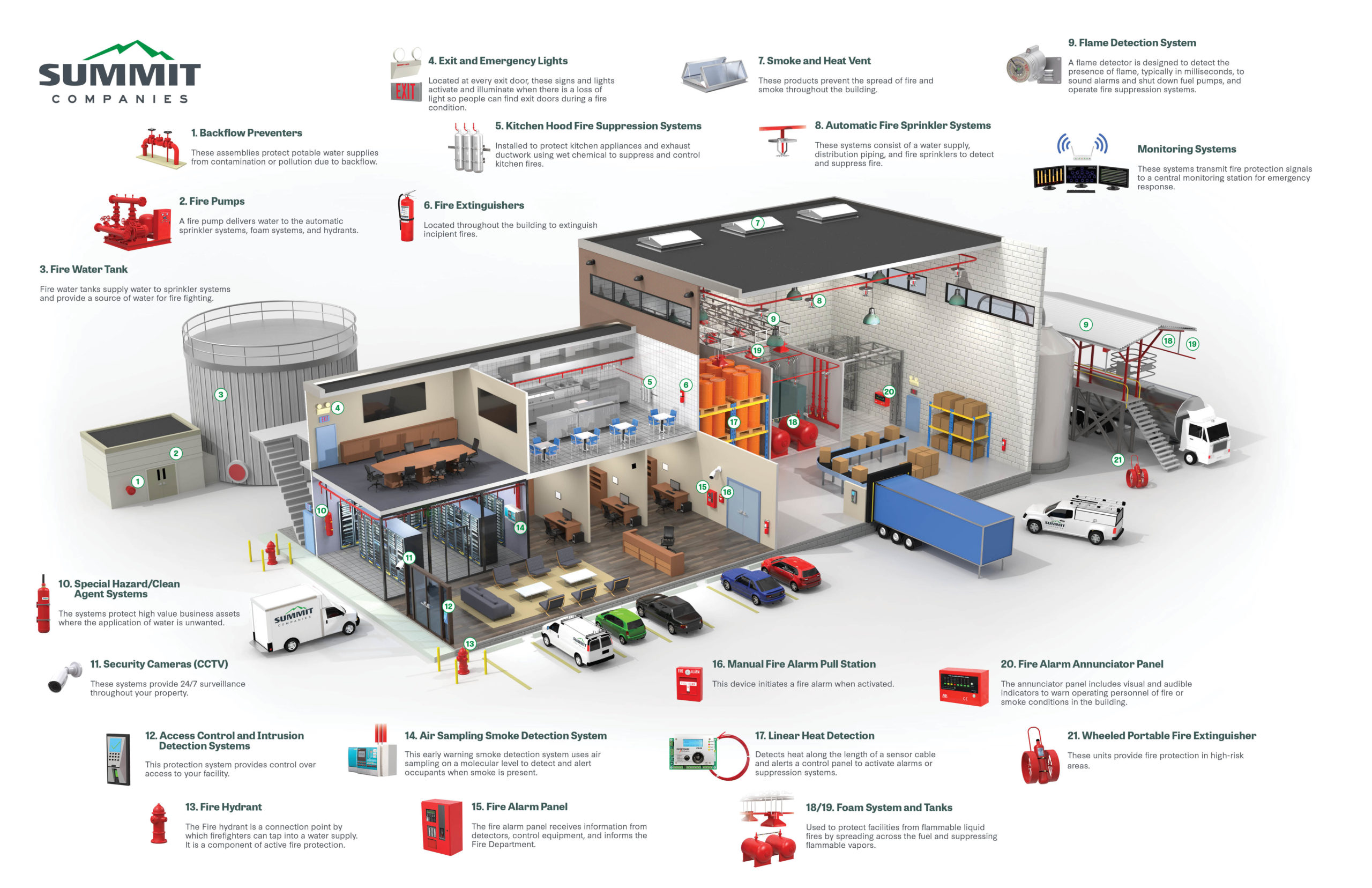
Credit: summitcompanies.com
Future Trends In Fire Detection Systems
Fire detection systems are evolving rapidly. Now, we are not just
fighting fires, but preventing them with advanced technologies.
The future promises actionable insights and customized solutions to
enhance safety and efficiency. Let’s have a look at the
emerging trends that you should watch out for.
The next generation of fire detection systems is set to leverage cutting-edge
technologies. Innovations include:
- Smart Detectors equipped with IoT capabilities.
- Advanced Sensors that can detect more than just smoke.
- Drone Surveillance for inaccessible areas.
- Image Processing for quicker fire identification.
These technologies not only detect fire early but also
prevent potential hazards.
Data analytics is a game-changer in fire prevention. By analyzing
past data, systems can predict and prevent emergencies. Here’s how
data analytics is making a difference:
| Pattern Recognition | Identifies potential fire signatures early. |
| Analysis of Historical Data | Helps in understanding and improving response times. |
| Real-Time Monitoring | Enables quick action to prevent escalation. |
| Risk Assessment Models | Inform safety protocols and evacuation plans. |
With such capabilities, predictive analytics become a critical component in fire safety.
Frequently Asked Questions On Fire Detection And Alarm
What Triggers A Fire Alarm To Activate?
Fire alarms are typically activated by smoke or heat detectors that sense fire-related environmental changes.
How Often Should Fire Alarms Be Tested?
Regular testing is recommended monthly to ensure functionality and safety.
Can Smoke Alarms Detect Carbon Monoxide?
Traditional smoke alarms cannot detect CO; special combined detectors are needed for that purpose.
What Are The Types Of Fire Alarm Systems?
There are mainly two types: conventional and addressable fire alarm systems, each serving different building needs.
What Is The Lifespan Of A Fire Detector?
Fire detectors typically have a lifespan of 8-10 years, after which they should be replaced.
How To Maintain A Fire Alarm System Properly?
Proper maintenance includes regular testing, cleaning of detectors, and professional inspections as per manufacturer guidelines.
Conclusion
Safeguarding lives and property is paramount. Embracing advanced fire detection and alarm systems is a game-changer. Remain vigilant, update safety measures, and prioritize regular maintenance. Remember, preparedness is key to minimizing fire hazards. Stay informed and invest in reliable fire safety solutions today.

I’m Abdus Sobur, a highly skilled and professional Fire Safety Officer with a passion for safeguarding lives and property. Over the course of my career, I’ve conducted numerous successful fire safety audits, earning a reputation for excellence in ensuring public safety.
In addition to my role as a Fire Safety Officer, I’m also dedicated to raising awareness about the importance of fire safety. Through my blog, I share insights into the functions of different fire safety equipment, aiming to empower individuals with the knowledge they need to protect themselves and their communities.
I’m driven by a deep commitment to promoting fire safety awareness and preventing fire-related incidents.
